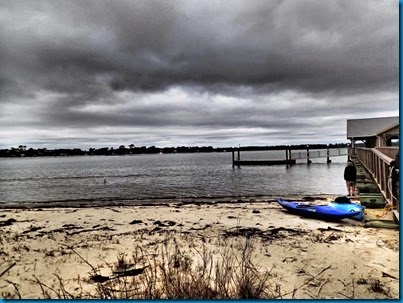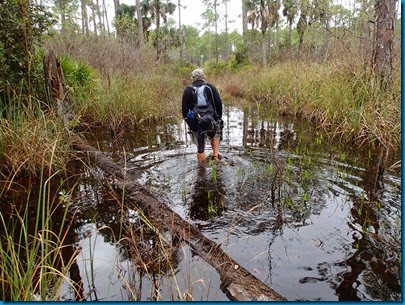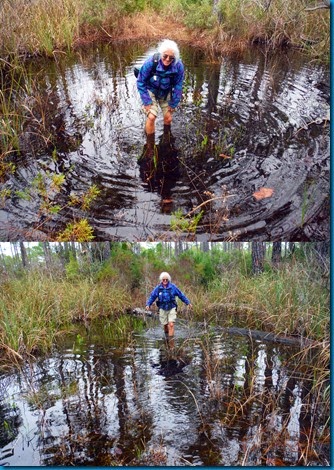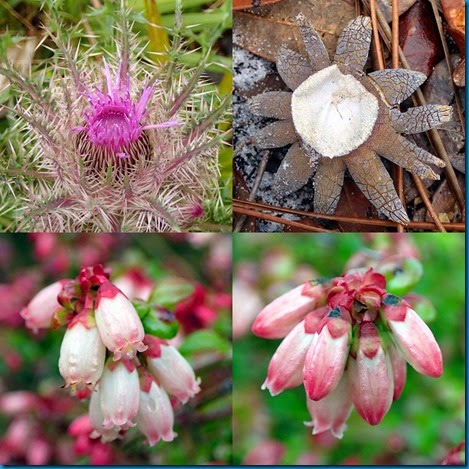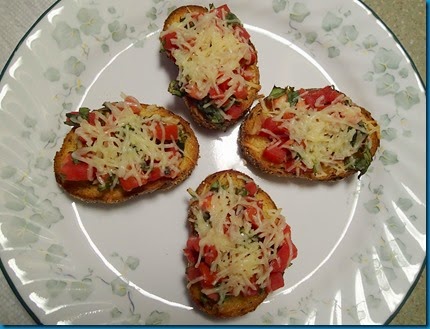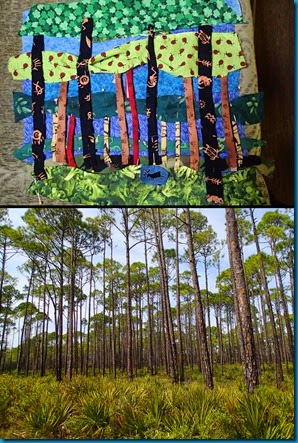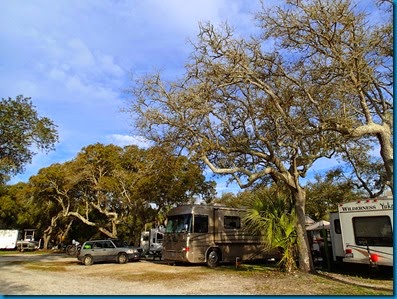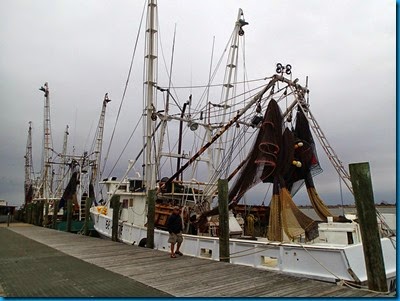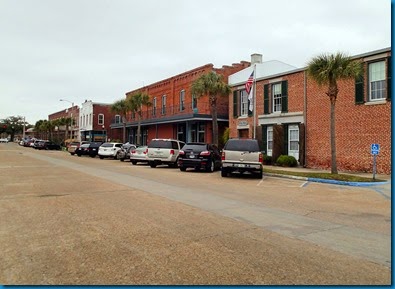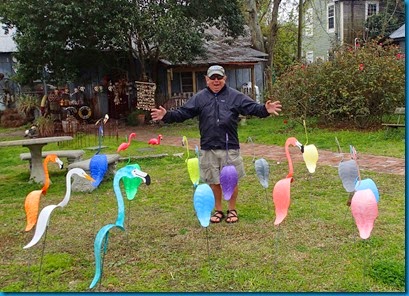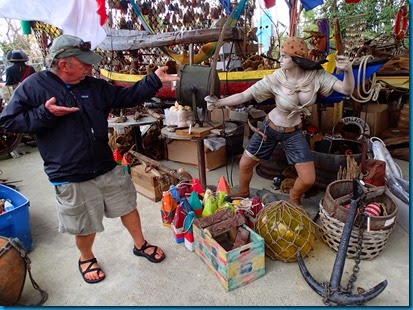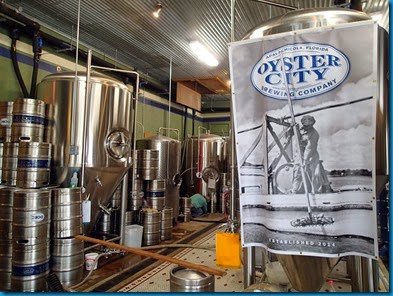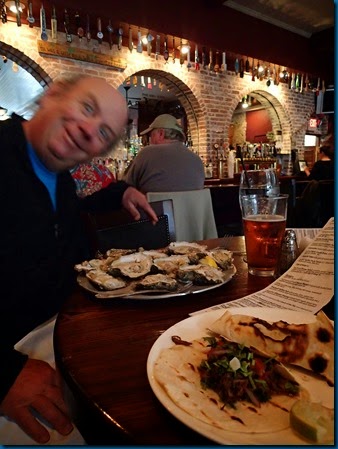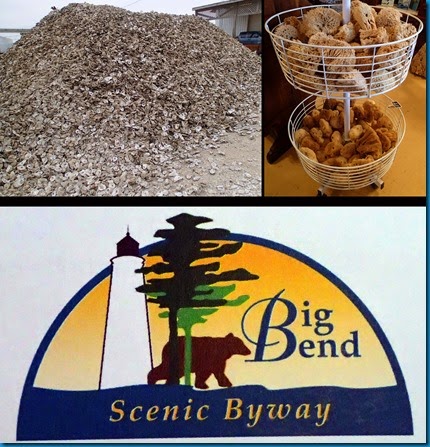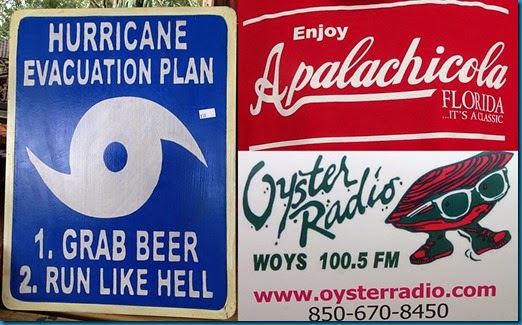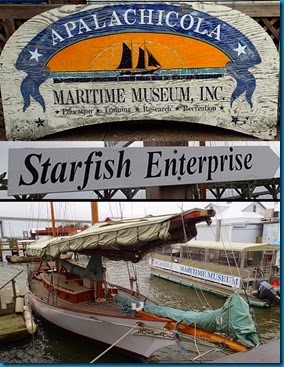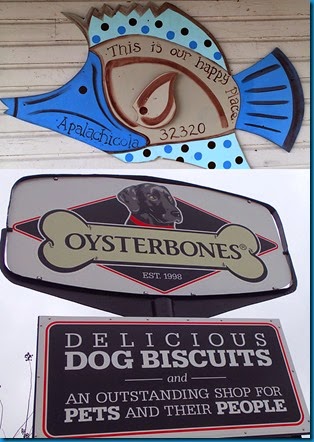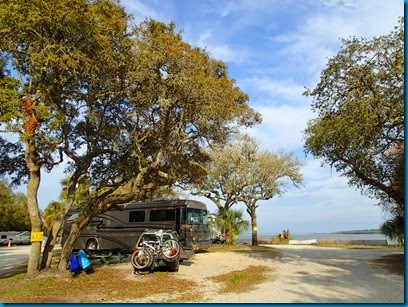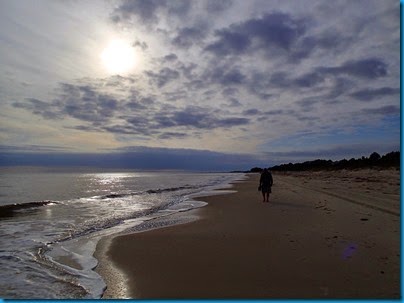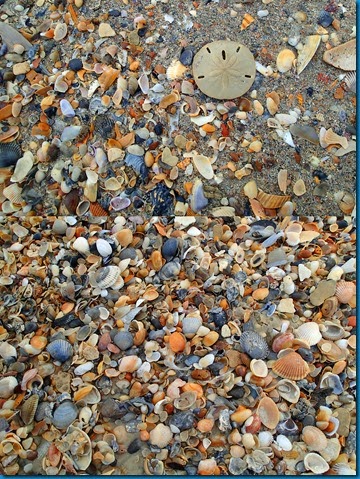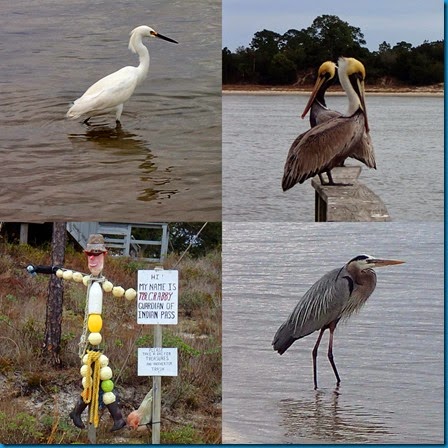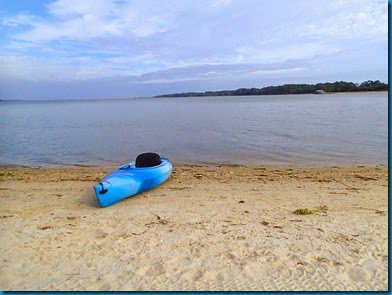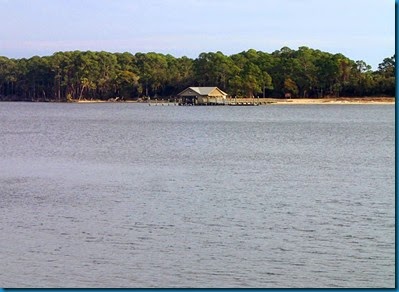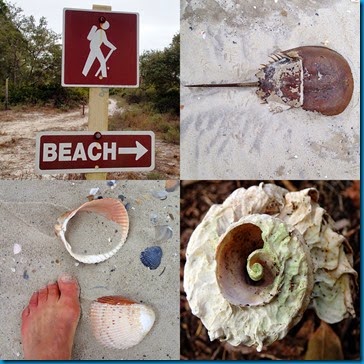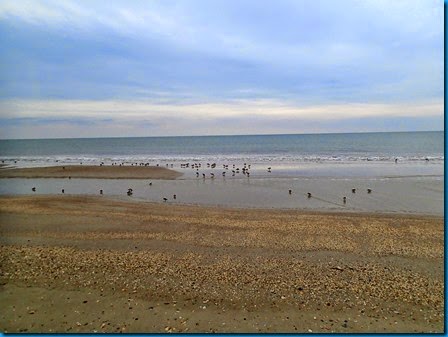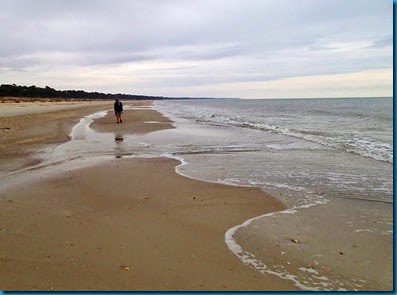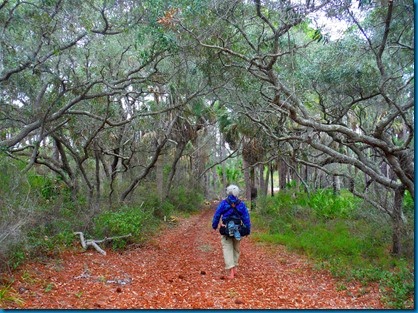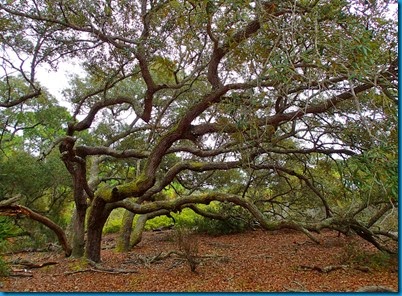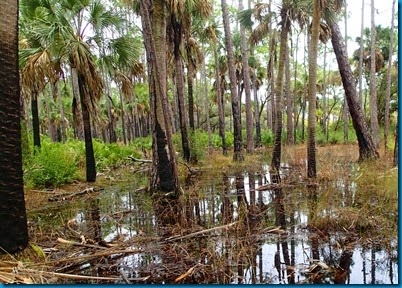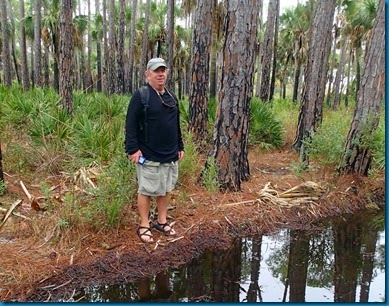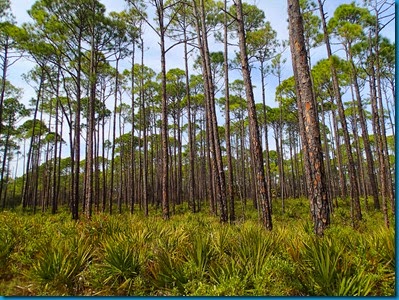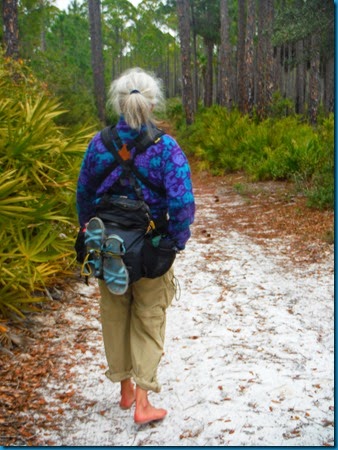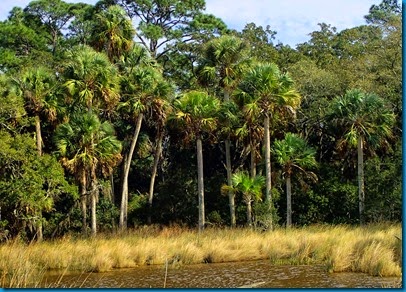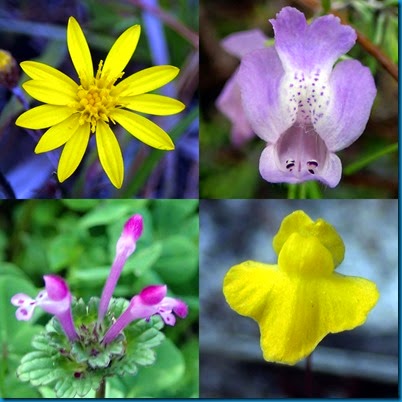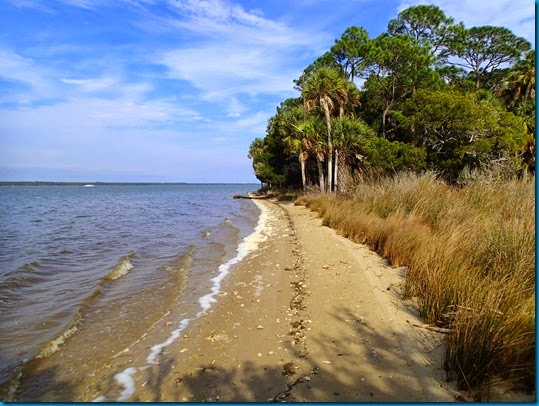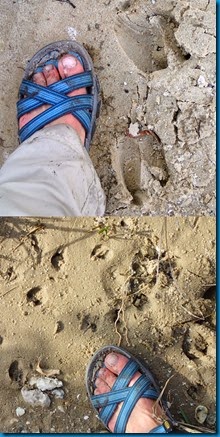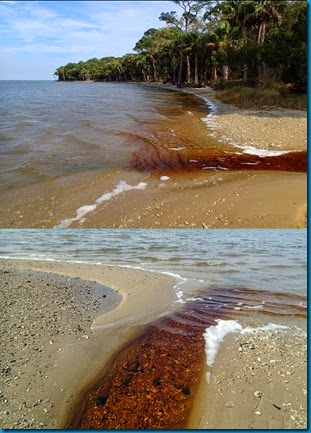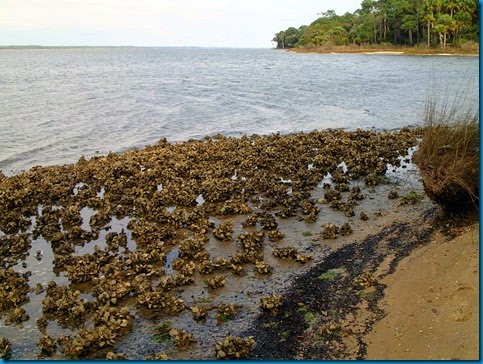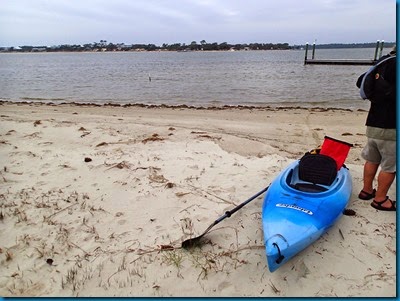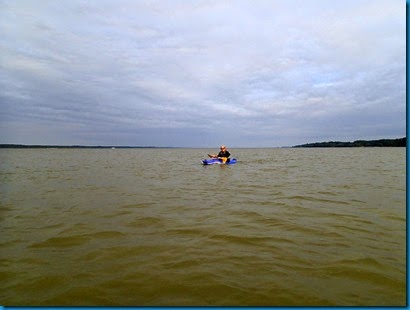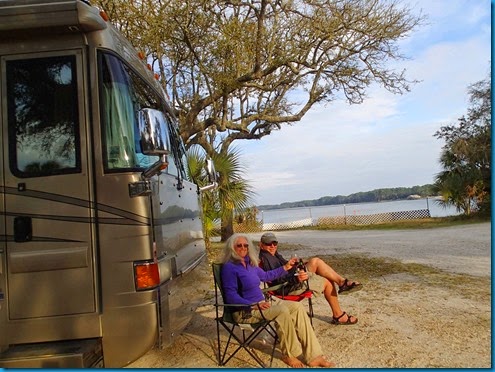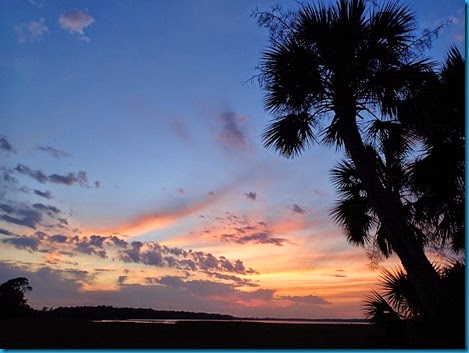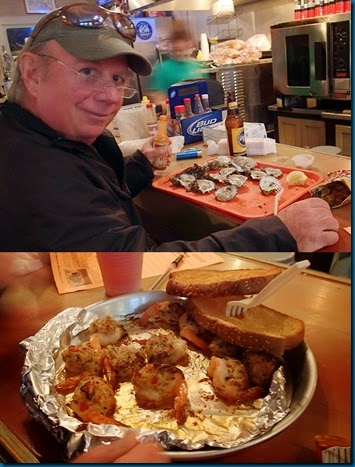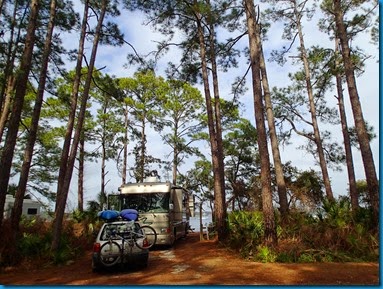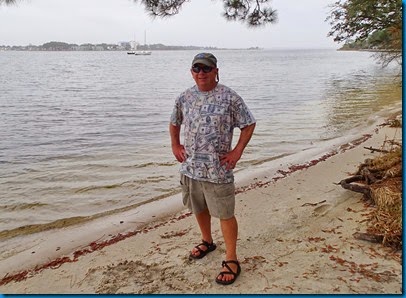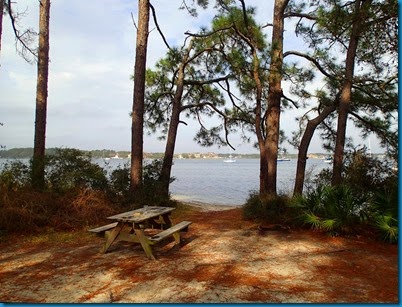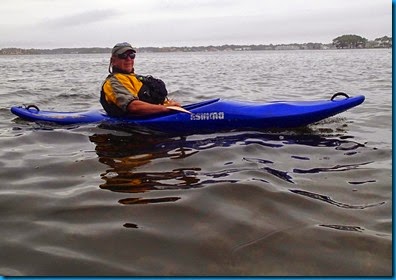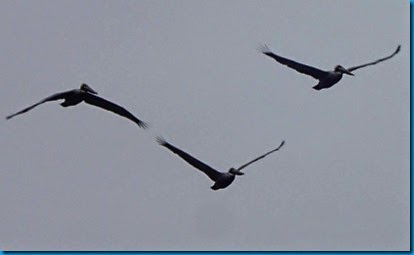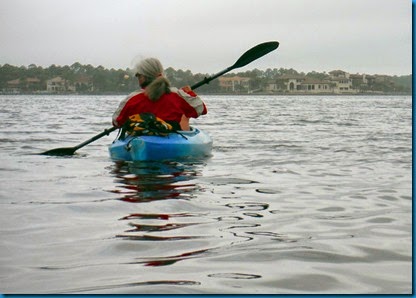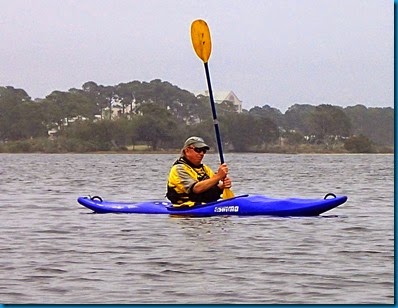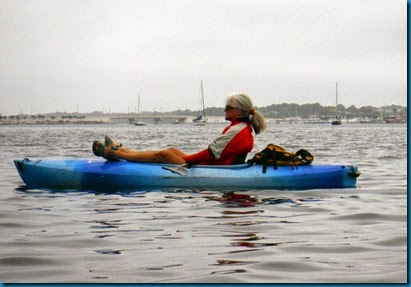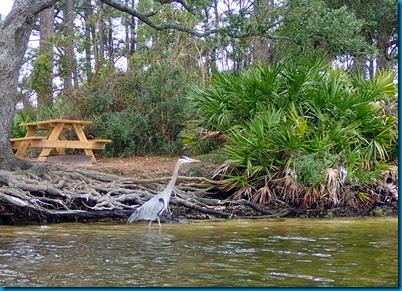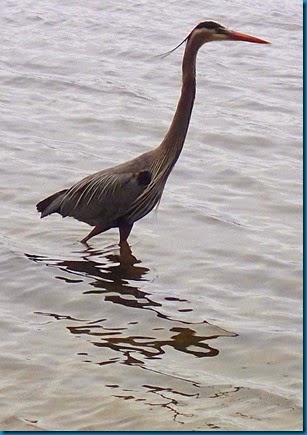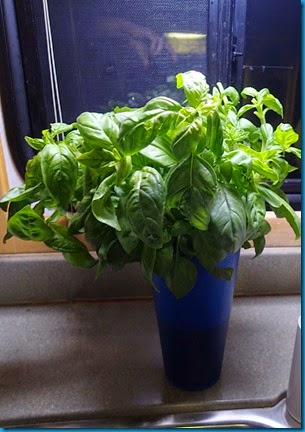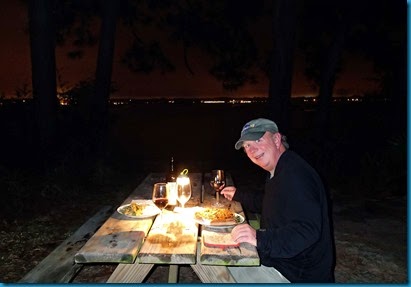Cloudy day, high 50’s. Very little wind so we paddled over to St Vincent's Island again.
A special effect my camera does of my boat and John at the St Vincent’s Island dock. We hiked 7 miles on different roads today. The island has a grid of roads on it from when they logged the island. Thy are mostly trails now. Three mile road was flooded in spots. John wading across.
You gotta love the REI convertible pants. The top photo I was wading across holding the pant legs up, the bottom photo I just zipped them off, much easier. Thistle, last years earth star, some heath blooms.
I made bruschetta pomadoro for appetizers tonight. Tomato, fresh basil, garlic and parmasan on toasted baguette. Yum, yum, yum. One of my favorites. I am working on a wall hanging of the longleaf pine/palmetto forest. It has a long way to go. . .
We woke up to sunshine this am. It is so beautiful here. It didn’t last, it has been mostly cloudy the last few days. Saturday we toured Apalachicola, Florida. It is the oyster capital of Florida. 90% of the oysters caught in Florida and 10% of the oysters caught in the USA are from Apalachicola bay. They also catch shrimp. These are some of the fishing boats in the harbor.
Historic downtown Apalachicola. It was started in the 1820’s as a cotton exporting port When the demand for cotton declined then they pillaged the lumber. It was also a big steamboat port, people travelled up the Apalachicola river in steam boats. After they cut down all the trees they started harvesting oysters. Now it is the Oyster capital and the trees have grown back. John got attacked by these flamingos.
After narrowly escaping the flamingo attack he was accosted by this pirate maiden. He was so worn out from these adventures we had to go to the Oyster City Brewery and check out their beers.
Then to the historic Owl Tap Room for lunch, for what else, oysters. We are in the oyster capital after all. Then we split an alligator sausage sandwich. This is a giant pile of oyster shells outside an oyster processing plant. They take most of the shells and put them back in the bay for the baby oyster-called spats- to attach too. They also use them as gravel on roads, yards- everywhere. Another product of the bay are natural sponges, there are sponge divers here. This part of Florida besides being called the Forgotten coast, is also part of the Big Bend. I was calling it the armpit of Florida-it looks more like an arm than a bend. And yes, they do have black bears here.
Hurricane evacuation plan-grab beer, run like hell. We have been listening to the Oyster radio since we have been here. At the Apalachicola Maritime museum we learned the history of the area. They also give boat building classes and eco tours. I think the Starfish Enterprise is the enclosed pontoon boat in the back here. The beautiful sail boat was built in 1930. It is restored with living quarters. For a price you can get taken out with a cook and crew. The paddle boat they have is gone being restored. They will give rides in it up river when it comes back.
This is our happy place, Apalachicola. Of course they make oyster dog bones too.
